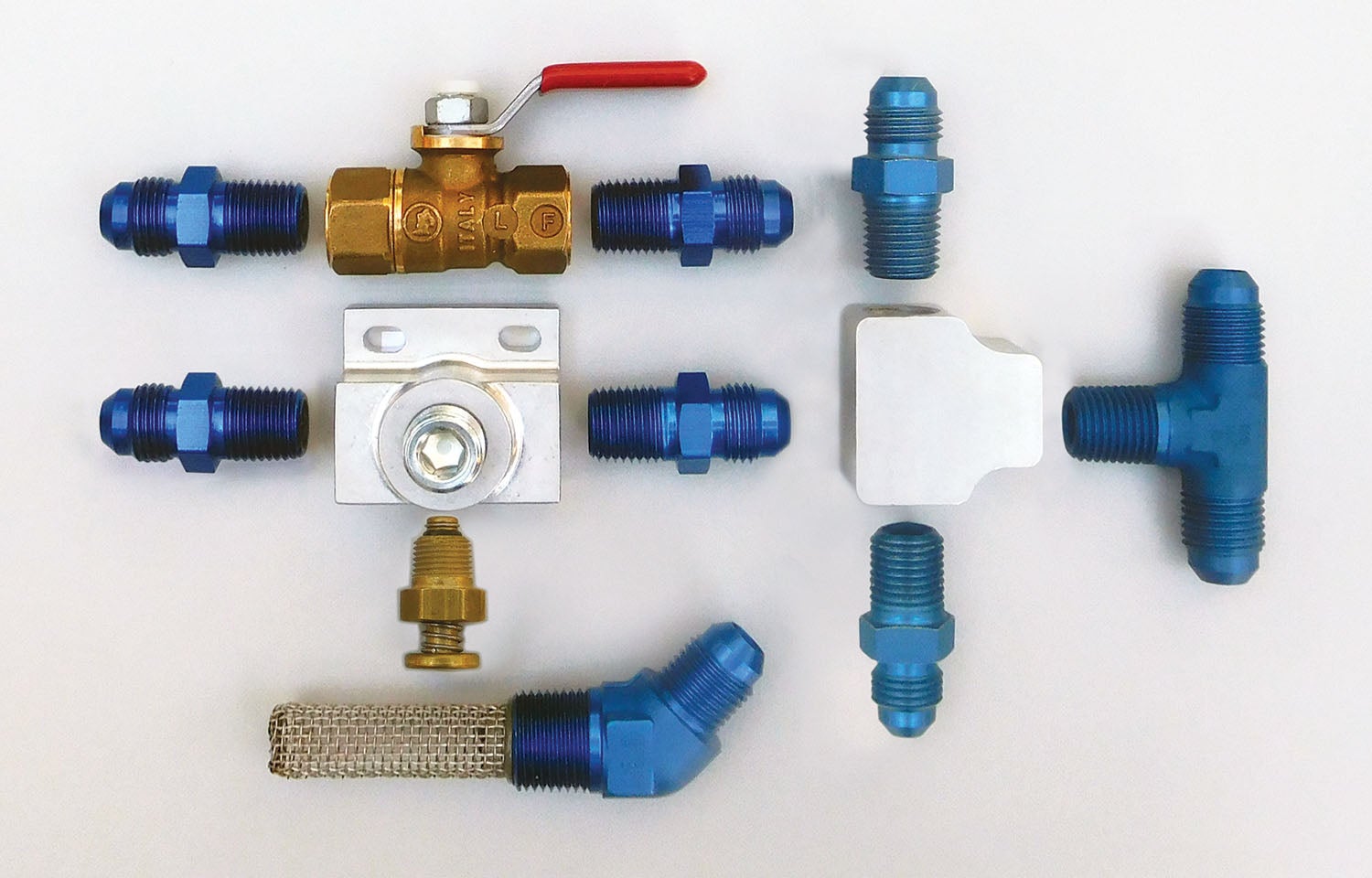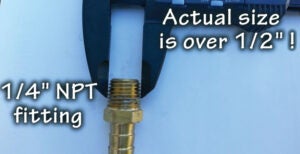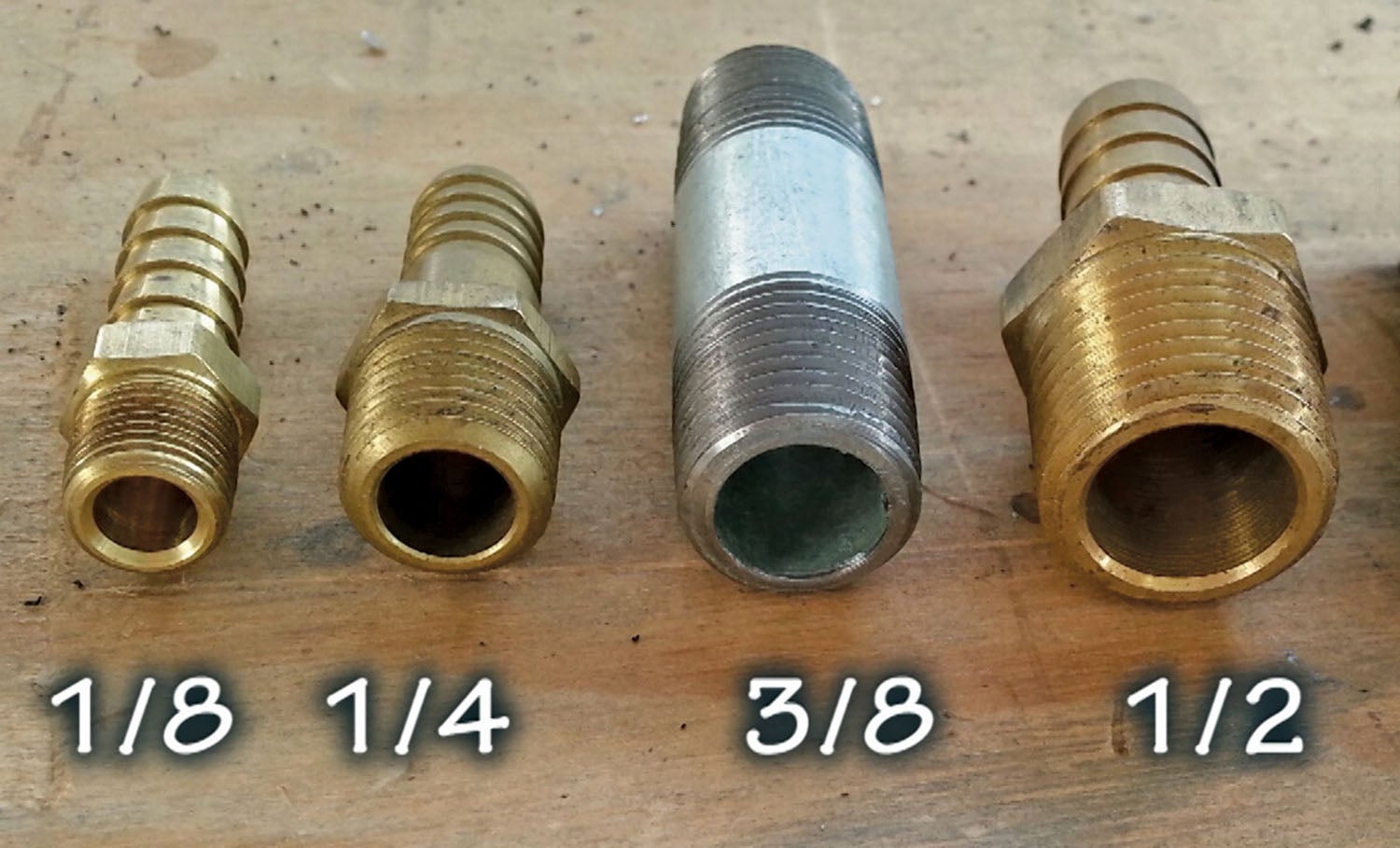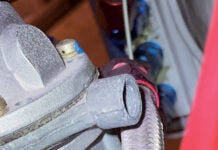National Pipe Thread is a U.S. standard for tapered threads, which we find on many aircraft fittings. Contrast this with straight threads, which are used on the nuts and bolts that hold our aircraft together. Tapered threads are used for sealing connections carrying gas and fluids. In our kit aircraft we use all sorts of fittings with tapered threads such as those found on fuel lines, brake lines and even avionic instrument air lines. Our household water pipes use the same NPT tapered thread standard.

There are two important points to consider when selecting a tapered fitting. First, the way sizes are assigned to these fittings is not intuitive. This may cause you grief the first time you need to order one from your favorite aircraft supplier. The two most common sizes we use in our aircraft are 1/8 and 1/4 inch.

However, if you measure one of these fittings, the size will not match any actual dimension of the part! This is somewhat similar to expecting a 2×4 piece of lumber to measure either 2 or 4 inches. It is only a nominal size description (in name only). Without understanding this principle, you will find yourself returning and reordering fittings because the diameter of the threaded portion may not fit your application.

Using a chart, you can determine the fitting’s nominal size by measuring the outer diameter of the threaded portion. Fortunately, there is an easy way to identify the two popular sizes. If the outer diameter is less than 1/2 inch, then you have a 1/8-inch fitting; if the diameter is a tad greater than 1/2 inch, then you have a 1/4-inch fitting. The larger NPT fittings are less frequently found on our small homebuilts, but measuring and using the chart will provide their proper size identification.
| Nominal Size | Actual Diameter |
|---|---|
| 1/8 inch | .405 inch |
| 1/4 inch | .540 inch |
| 3/8 inch | .675 inch |
| 1/2 inch | .840 inch |
A fitting’s nominal size is determined by measuring the outer diameter of the threaded portion.
The second important point to remember when using NPT fittings is that a sealant must be used on the threads if you are interested in a leak-free connection. This requirement is due to the microscopic channel in the spiral thread design that allows a path for leaks to occur. A number of good choices for sealant are available depending on the application. For example, Loctite 567 or similar products from Permatex work well for a fuel system. A good sealant manufacturer will describe the compatible materials to be used with their product. Avoid using plumber’s Teflon tape as small bits of this material are easily cut by the threads and can enter the system. Also, never confuse an NPT thread connection with a flare nut connection. Sealant is never used in a flare connection but always used for an NPT connection.
With time and experience you will soon be able to identify the nominal sizes of NPT fittings by just looking at them. You will also be surprised how many of these fittings your finished aircraft uses.













